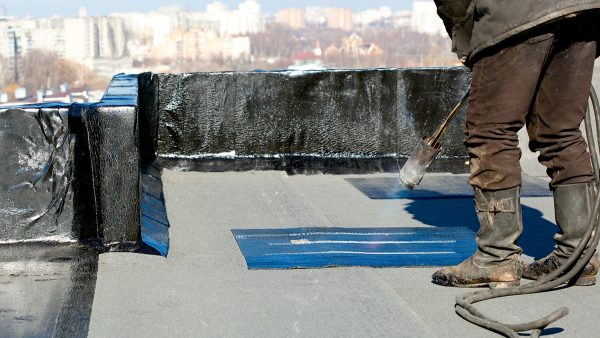How do you waterproof a commercial building?

Every commercial building has an enemy: water.
Water can sneak into any part of a structure and wreak havoc, expanding rebar, weakening structural steel, and tearing through carpet and ceilings. How do you keep it out of your commercial building?
It starts with the components of your building envelope.
The building envelope
Every building has what’s called the “building envelope.” That’s the boundary between the conditioned and unconditioned areas of the building. It controls the flow of water, air, and temperature inside and outside.
Waterproofing is the most critical part of the building envelope. There are several components to waterproofing a building.
Roof
The roof is where it all starts. Most commercial buildings have flat roofs, which slope slightly to specified drainage areas. These roofs use a high-quality waterproof material to shed rain. Places where water may stand for some time get extra attention, as do areas where vents or other protrusions come through the waterproof covering.
Walls
After the roof comes the walls, which are usually classified as either barrier, drainage, or surface-sealed. Barrier walls absorb some water and keep it from penetrating through; most concrete and masonry fall in this category. Drainage walls have cavities and drainage systems that allow any water to drain out. Most modern EIFS walls are drainage systems, though some older walls are barrier-based. Surface-sealed walls are designed not to allow any water penetration at all.
Foundation and basement
Foundations and basements have an additional factor to consider: the pressure from groundwater. By its very nature, groundwater exerts pressure on a slab or basement. That means it will find the tiniest cracks or openings and force its way through.
Basements and foundations are waterproofed from the outside with a coating when the structure is built. Modern coatings are flexible and not affected by soil pH, making them much more capable of preventing water intrusion.
Interior waterproofing is also used, with special care paid to points where pipes come through. Urethanes or epoxies are injected around anything that goes through the foundation.
Basement waterproofing also includes having a way to deal with water if it makes its way through. Sump pumps and French drains are some of the most common additions to basements for waterproofing.
Waterproof your commercial structure
No matter the building, you need good waterproofing. Water can cause more problems than just about anything else. Your building envelope needs to be impervious. Talk to JK Industries today, and we’ll help your structure stand the test of time.
